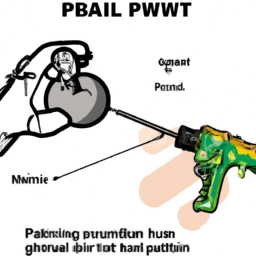How A Paintball Gun Works Understanding the Basics
How A Paintball Gun Works
Exploring the Functionality and Design of A Paintball Gun
Are you looking to take up paintball as a fun, outdoor game? Before you head out, it's essential to understand the efficient design and working of its primary weapon the paintball gun. This article attempts to offer an in-depth exploration into various components and features that make a paintball gun the popular sports accessory it is.
History
The idea of a breath-operated weapon dates back to the 18th century, the first such weapons being the Girandoni air rifle and the Kipplauf breechloader. However, paintball guns as we know them now, first emerged in the 1980s for recreational sporting purposes. Today, they are common a popular recreational tool among airsoft, paintball, and Nerf gun enthusiasts alike.
How Does a Paintball Gun Work?
In essence, the primary components of a paintball gun are a paintball hopper or loader, a barrel, a regulator, and a hammer assembly. The loader contains the paintballs, the barrel is the tube through which the ball is fired, and the hammer compresses the air that's used to shoot the balls.
The first step is to load the paintballs into the hopper, which is then placed at the top of the gun. When the trigger is pulled, the hammer inside the gun is released and starts compressing the air that's been stored in the regulator. The flowing air, which at this point can be 900 PSI or above, thrusts the paintball from the barrel and out towards the intended target.
Key Components of A Paintball Gun
The following are the primary components of a paintball gun, and how they contribute to the shooting process:
Hopper
The hopper is a vertical chamber that is found on top of the gun, and it contains the paintballs that are fed into the barrel. Usually made from plastic or metal, paintball loaders come in a range of shapes and sizes.
Regulator
The regulator is a device located immediately after the air tank and connected to the frame of the gun. It only allows a certain amount of air to flow through at a time, meaning that the gun's accuracy is increased as it builds a consistent velocity for each shot.
Hammer Assembly
The hammer assembly is a system of components responsible for controlling the airflow in the gun. The trigger is pulled here and it will release the hammer, which then directs the movement of the air that will propel the paintball out of the barrel.
Barrel
The barrel is a cylindrical chamber through which the paintballs pass, and usually has small, angled grooves called rifling' that help to spin the ball and increase accuracy. The accuracy of a marker is usually determined by two important aspects the bore/barrel and the paint quality. It's essential to choose the right barrel size and style for your chosen game type.
Construction of a Paintball Gun
A paintball gun is a pressurized system with an input, the reciprocating piston or hammer, and an output, where the valve opens allowing the pressurised gas to pass over the paintball. They are usually constructed out of metals such as aluminum or steel, plastic, and aluminum or steel tubing. Most guns are powered using a CO2 or compressed air cylinder located underneath the gun and connected to the barrel.
Conclusion - Final Word
Paintball guns are designed to be reliable and efficient as a sporting tool. However, understanding the components of a paintball gun, its construction, and how it works, is key to ensuring safe and effective use. With this knowledge in mind, you're now equipped to have an excellent time with your paintballing adventures!
Suggested Reading:

Previous Page
Next Page
